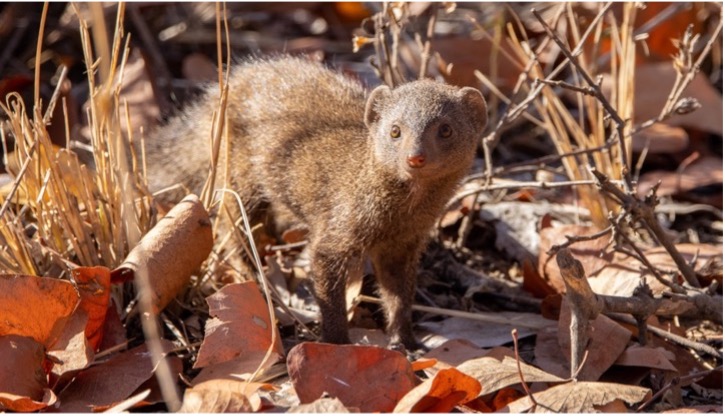September 2024
The Ammo is in the Camo
Share:
The Ammo is in the Camo
There are some incredible examples of camouflage to be seen (or not) at the moment while the terrain is so dry and barren. Remaining inconspicuous is such a clever evolutionary strategy to evade predators or ambush prey.
Had the crowned lapwing (Vanellus coronatus) not been sitting on the eggs at the time, we would never have known they were there. These birds lay their eggs on open ground, often in gravelly or sandy areas. The three eggs were speckled with various shades of brown, grey, and black, mimicking the appearance of the ground, grass, seeds, bark and burnt grass tufts. This cryptic coloration protects the eggs from predators by making them almost indistinguishable from the terrain, significantly increasing their chances of survival. Egg-laying is timed to precede the rainy season and most incubating is done by the female. In addition to this crowned lapwings have been known to do false-brooding and other distraction displays to lure terrestrial predators away from the nest.

We heard the chirruping of a busy family of dwarf mongooses (Helogale parvula) before spotting them. Their fur is a reddish-brown or greyish colour, which blends well with the dry grasses and sandy soils of their habitat. This coloration serves as a form of background matching camouflage, allowing them to remain inconspicuous while foraging or resting. It was amazing to notice that even their noses matched the colour of the dried mopane leaves. Camouflage is particularly important for dwarf mongooses because they are diurnal and spend much of their time out in the open, searching for insects, small reptiles, and other prey. While foraging they are vulnerable to predators, such as birds of prey, snakes, and larger mammals, so blending into their environment is crucial for minimizing the risk of detection.

African wild dogs (Lycaon pictus), with their mottled coats of black, brown, white, and gold, use a different type of camouflage. Their unique fur patterns help them blend into the dappled light of the bush and woodland areas where they hunt. This form of disruptive coloration breaks up their outline, making it harder for both prey and predators to distinguish individual dogs from their surroundings, especially when they are in motion. The wild dog in this photograph had finished a successful hunt that morning. Standing out in the open amid the rocks, dark soil and dried grass it was almost indistinguishable from the background.

One of the most recognized examples of camouflage is the lion (Panthera leo). Although not as striking as the patterns of other animals, the lion's tawny coat provides excellent camouflage in the savannas and grasslands area of Malilangwe. Their coat colour blends seamlessly with the dry grasses, particularly now during the dry season when vegetation is sparse and yellowish. This disguise allows lions to approach their prey stealthily, remaining undetected until they are close enough to attack with a short burst of speed.


By Jenny Hishin
Author / Field Guide